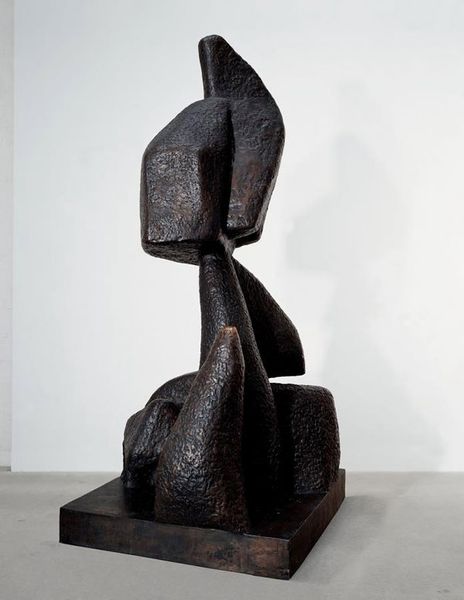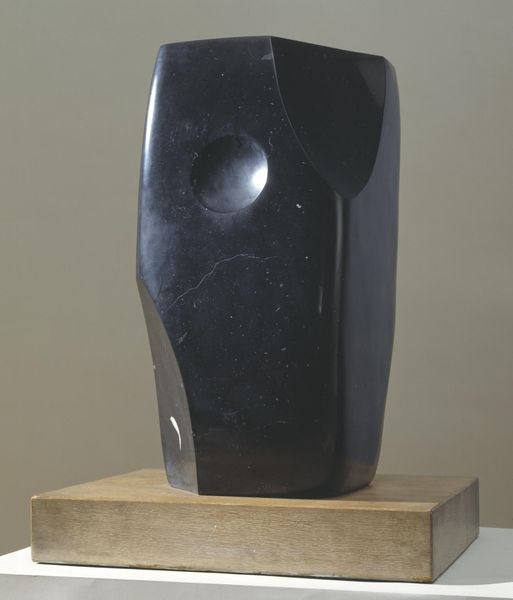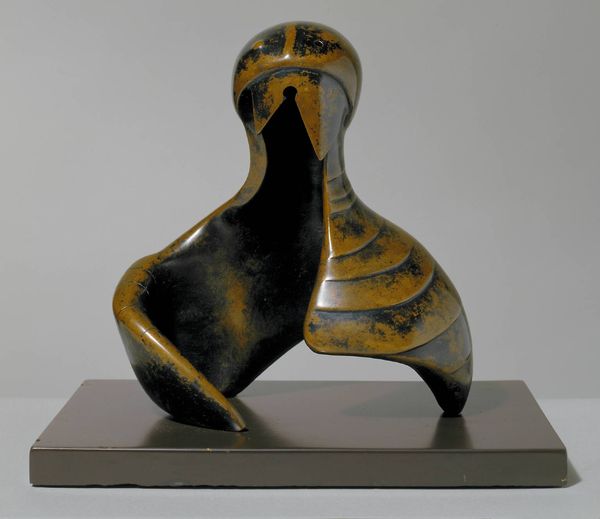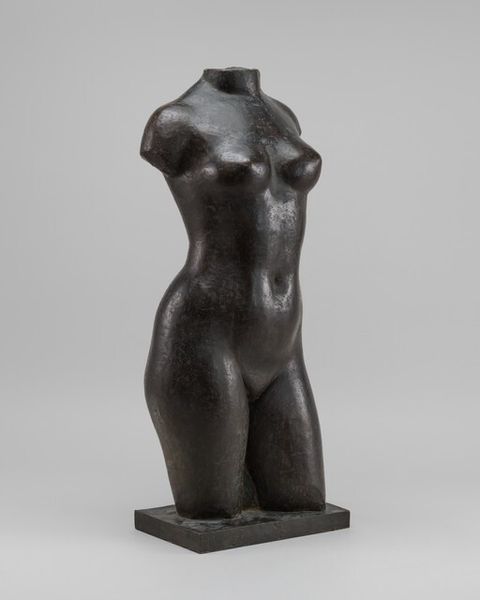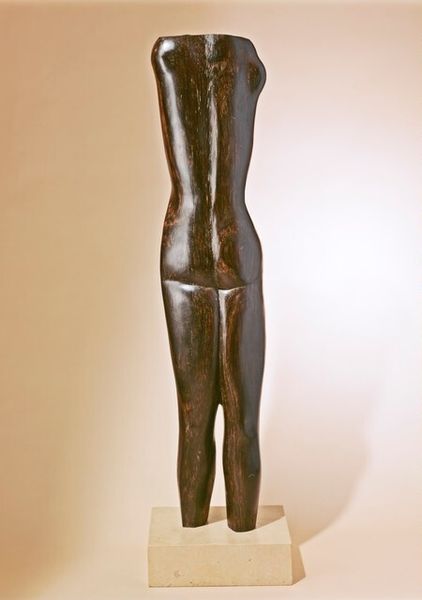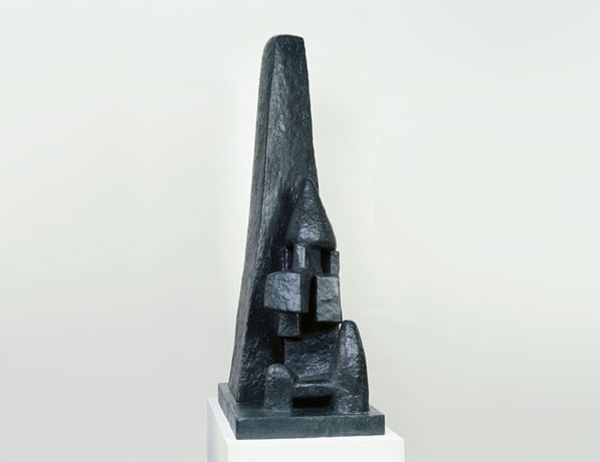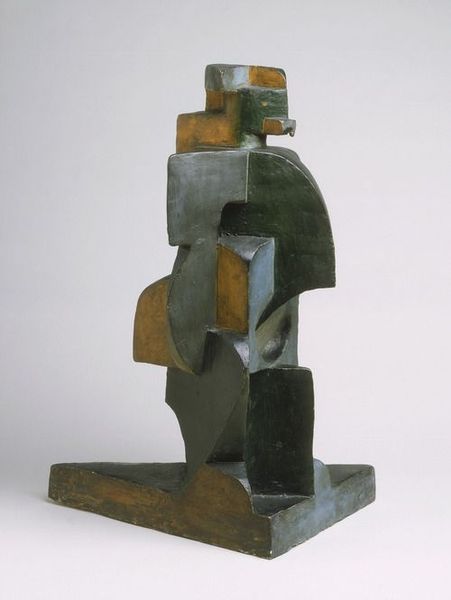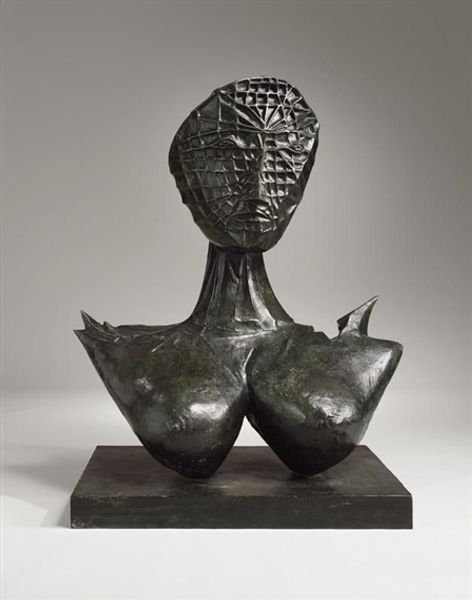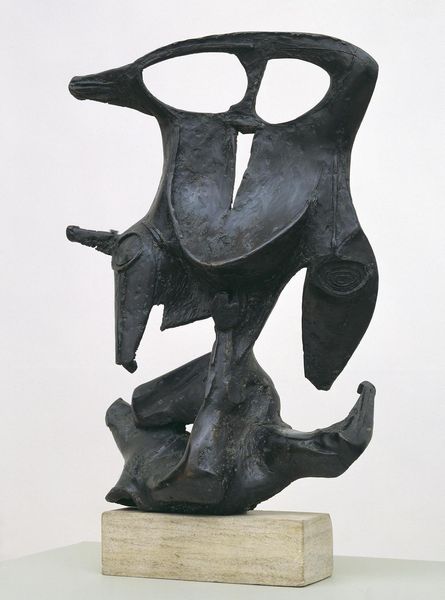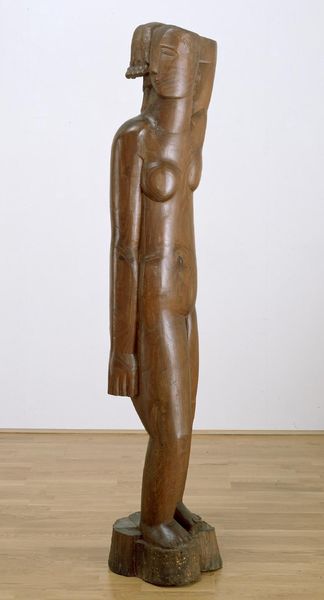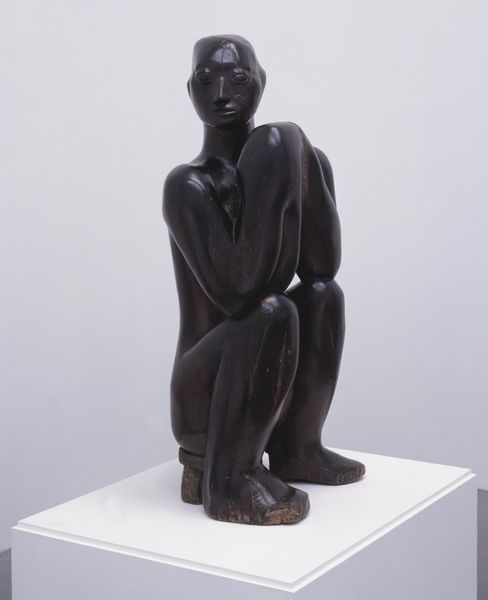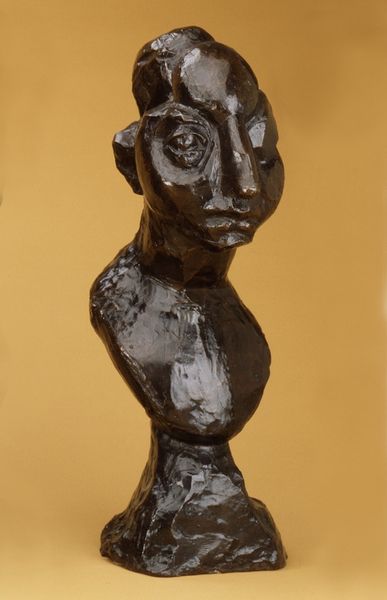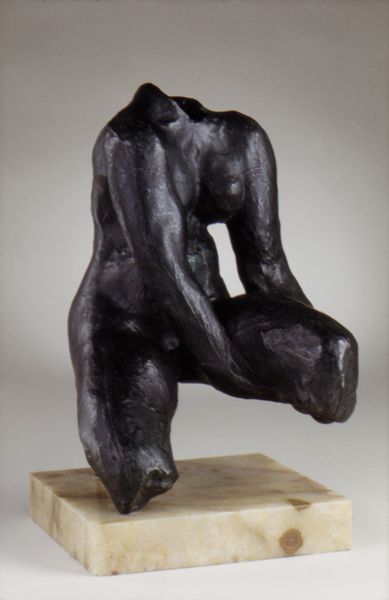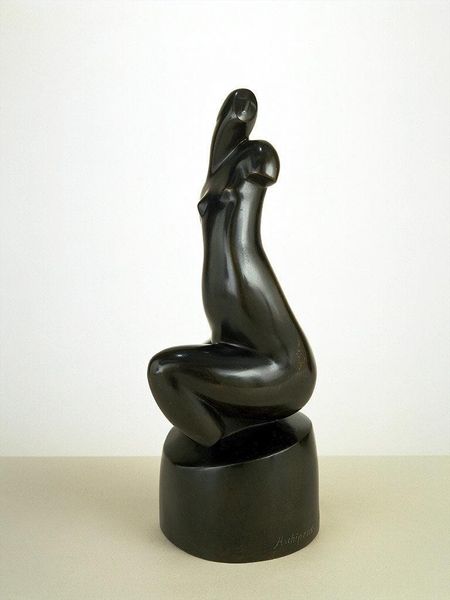
Dimensions: object: 1587 x 483 x 311 mm
Copyright: © Bowness, Hepworth Estate | CC-BY-NC-ND 4.0 DEED, Photo: Tate
Editor: This is Barbara Hepworth's "Bicentric Form," a sculpture currently held in the Tate collection. The use of stone is striking. What can you tell me about it? Curator: The act of carving itself is key here. Hepworth's direct engagement with the stone—the labor, the physicality—reveals a commitment to the material. How does the sculpture’s form challenge traditional notions of the sculpted figure? Editor: It feels very modern. I think the negative space really impacts the form. Curator: Precisely! The holes aren't just absences; they're integral to the sculpture. They force us to consider the relationship between the object and the space it occupies, questioning the boundaries of sculpture itself. Hepworth’s methodology is critical to consider. Editor: I see how the material and process create a dialogue. Thanks! Curator: Indeed, a dialogue between the sculptor, the stone, and the viewer.
Comments
tate 8 months ago
⋮
http://www.tate.org.uk/art/artworks/hepworth-bicentric-form-n05932
Join the conversation
Join millions of artists and users on Artera today and experience the ultimate creative platform.
tate 8 months ago
⋮
Explaining its title, Hepworth described this work as 'a fusion of two figures into one sculptural entity'. She saw it as a development from works made up of separate elements, such as Three Forms, 1935 (on display in this room). More specifically, it grew out of the drawings she made of interlocking figures. This fusion of figures could be seen as a symbolic expression of her interest in individual and social relationships. One writer described such carvings as 'unmistakably archetypal',relating them to the ancient standing stones near Hepworth's home in Cornwall. Gallery label, August 2004
